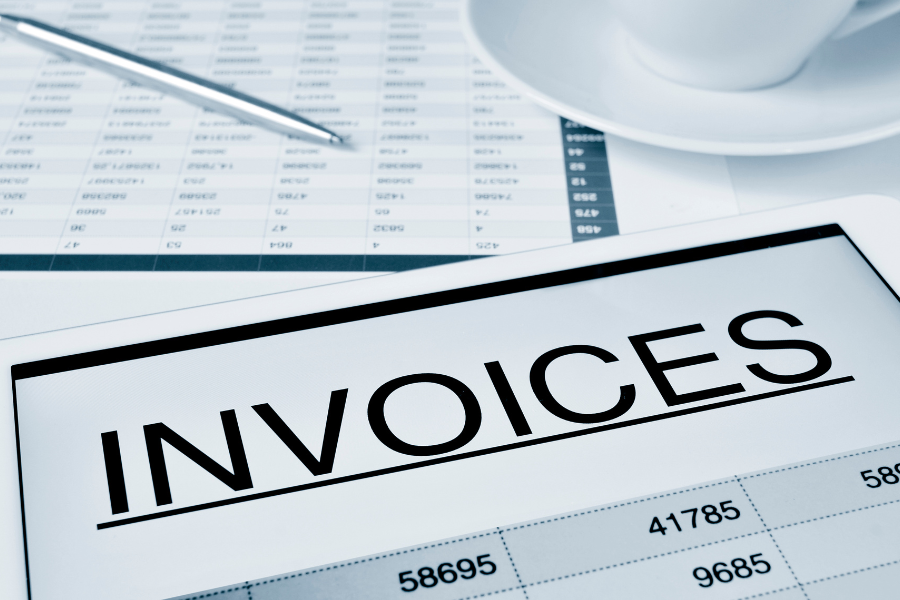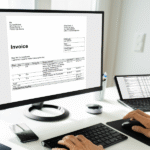The introduction of Malaysia’s e-Invoicing system under the Inland Revenue Board is a pivotal moment for the country’s digital economy. The new system is designed to bring greater transparency, traceability, and compliance across the entire B2B and B2G transaction ecosystem. But as with any large-scale digital transition, the implementation comes with its own set of challenges—none more frustrating than failed invoices.
Invoice failures under the MyInvois system aren’t just an inconvenience. They delay payment cycles, interrupt workflow automation, create uncertainty in tax reporting, and ultimately place compliance at risk. Whether you’re preparing early for the mandatory rollout or already sending electronic invoices via Peppol, understanding why invoices fail—and how to prevent it—can save you from escalating operational costs and regulatory complications.
Let’s get into the details of where the breakdowns usually occur and how Malaysian businesses can tackle them without getting bogged down by trial and error.
Why Addressing Failed Invoices Matters More Than You Think
Each failed invoice is a signal that something in your process—data, formatting, integration, or governance—isn’t aligned with regulatory or platform expectations. This isn’t just a technical glitch. It’s a compliance risk that could affect tax submissions, payment obligations, and future audit readiness.
Ignoring failed invoices or treating them as isolated issues leads to a fragmented approach. But understanding them systematically allows you to improve upstream and downstream processes across departments, systems, and even partner networks.
Moreover, consistent invoice failures can damage your credibility with both trading partners and regulatory authorities. When invoices are frequently rejected, it creates friction in business relationships—especially when payment timelines are affected or when clients and vendors must repeatedly resolve discrepancies.
Over time, this erodes trust and can result in additional scrutiny from tax authorities, increasing the risk of audits and penalties. Proactively addressing the root causes not only strengthens operational resilience but also reinforces your reputation as a compliant and reliable business partner.
The 10 Most Common Causes of Failed Invoices in Malaysia’s MyInvois Ecosystem
1. Missing or Incorrect Business Identifiers
One of the most fundamental yet frequent causes of invoice failure is the use of incorrect or missing identifiers—Tax Identification Number (TIN), company registration number, and Peppol participant ID.
How This Happens:
- Trading partner data is outdated or inconsistently stored across systems.
- Manual data entry errors during invoice creation.
- Mismatch between internal records and LHDN registration data.
How to Fix It:
- Centralize your master data and implement real-time validation against the latest LHDN or Peppol directory.
- Automate recipient data lookups during invoice generation.
- Implement validation rules that block invoice creation if any identifier is missing or doesn’t match standard formatting.
2. Non-Compliance with Peppol BIS Format
Malaysia’s e-Invoicing system uses Peppol BIS Billing 3.0, a structured XML format. But simply using the right format isn’t enough—you need to ensure every field and element is populated correctly based on Peppol rules and LHDN-specific constraints.
Common Mistakes:
- Use of unsupported characters in free-text fields.
- Improper date formatting.
- Incorrect use of currency codes, tax types, or business terms.
How to Fix It:
- Use a solution that supports Peppol BIS Billing 3.0 natively.
- Set up field-level validations within your ERP or AP system to ensure data complies with schema rules before submission.
- Regularly update your templates to match evolving validation requirements.
3. Violating LHDN Validation Rules
LHDN has built additional rules on top of the Peppol BIS structure. These validation checks are strict and fail invoices for any inconsistencies, missing mandatory values, or use of unsupported data fields.
Examples of LHDN-Specific Validation Rules:
- Tax breakdowns must be itemized.
- Supplier and buyer must have valid Malaysian TINs.
- Self-billed invoices must include both supplier and buyer signatures.
How to Fix It:
- Work with a provider that maintains updated compliance with LHDN validation rules.
- Regularly test invoices using LHDN’s sandbox environment to detect new validation updates before they go live.
- Implement logic to distinguish between transaction types and apply relevant rule sets automatically.
4. Incorrect Digital Signatures or Expired Certificates
Digital signatures are a non-negotiable part of e-Invoicing in Malaysia. Each invoice must be signed using a certificate issued by an approved Certificate Authority. If your signature is invalid or expired, the invoice will be rejected.
How to Fix It:
- Keep digital certificates monitored and renewed ahead of expiration.
- Use automated signing tools that apply the correct certificate based on sender credentials.
- Ensure your certificate supports XML digital signing compatible with LHDN.
5. Using Incorrect Document Types or Metadata
Document type is not a cosmetic field—it’s a key parameter that drives validation workflows. Sending a debit note when a credit note is required, or tagging a self-billed invoice incorrectly, often leads to rejection.
How to Fix It:
- Educate your finance team on document type classification.
- Implement templates based on transaction type to ensure document type metadata is correct by default.
- Use role-based access to avoid document misclassification.
6. Submission of Duplicate Invoices
If the same invoice is submitted more than once—intentionally or unintentionally—it will fail. This often happens when retries are made manually without checking acknowledgment status from LHDN.
How to Fix It:
- Include a duplicate detection mechanism in your invoicing workflow.
- Assign immutable invoice IDs.
- Ensure your invoice platform checks for acknowledgment or failure response before retrying submission.
7. Tax Code or Supply Type Inconsistencies
LHDN expects standardized tax codes (e.g., SR for standard rate, ZRL for zero-rated local supplies) and supply types (domestic, export, etc.). Using non-standard codes or outdated tax classifications will result in a failed invoice.
How to Fix It:
- Synchronize your ERP’s tax configuration with the LHDN-approved list.
- Map each product or service to its correct tax type and supply classification during catalog setup.
- Avoid using generic “miscellaneous” tax fields.
8. Invalid or Mismatched Buyer-Seller Relationships
Sometimes invoices fail due to discrepancies in buyer-seller details. This includes mismatches in names, addresses, or business identifiers as stored in LHDN’s database.
How to Fix It:
- Use a pre-validation API (if available) to confirm buyer details before generating an invoice.
- Coordinate with your trading partners to standardize their data.
- Set up data sync routines to align internal systems with your invoice platform.
9. Poor Network Connectivity and API Timeouts
Not all failures are caused by incorrect invoice content. Sometimes they fail due to backend issues like transmission failures, API timeouts, or response delays from LHDN’s platform.
How to Fix It:
- Use a Peppol Access Point Provider with built-in retry logic, queuing, and guaranteed delivery mechanisms.
- Monitor API transaction health with live dashboards.
- Avoid submitting invoices in bulk during peak hours without traffic control logic.
10. Manual Processes That Introduce Risk
Reliance on manual processes—spreadsheets, uploads, email-based invoice approvals—exposes businesses to formatting mistakes, inconsistent data, and missed validation checks.
How to Fix It:
- Automate your invoicing process end to end—from invoice creation and approval to validation and submission.
- Implement structured approval workflows with system-based checkpoints.
- Use dashboards that highlight data gaps before submission.
Moving From Reactive Fixes to Proactive Prevention
While fixing rejected invoices is necessary, a more sustainable approach is to reduce the chances of failure in the first place. A robust invoicing ecosystem should actively prevent errors before they are submitted to LHDN.
Here’s what proactive prevention looks like:
- Centralized Master Data Management
When your customer, supplier, and product data live in multiple places, errors are inevitable. Implement a centralized MDM strategy that synchronizes data across your systems and formats it according to compliance needs.
- Real-Time Data Validation Before Submission
Validating invoice data before it’s generated ensures issues are caught at the source. Automated validation tools can verify TINs, supply types, tax classifications, and field formats at the point of entry—not after.
- Role-Based Workflow Automation
Give finance, compliance, and IT teams access to the parts of the invoice process relevant to their roles. Approvals, metadata tagging, and digital signing should happen automatically within role-specific workflows.
- Training, Change Management, and Ongoing Education
Every update from LHDN or Peppol has downstream effects on how you create and send invoices. Equip your teams with continuous education and updates to minimize confusion and manual errors.
- Post-Submission Monitoring and Response Handling
Rejections still happen. The key is how quickly you detect and resolve them. Implement monitoring dashboards that track submission status, acknowledgment responses, failure reasons, and retry attempts in real time.
Conclusion: Advintek Is the Partner You Can Trust for Reliable e-Invoicing
If you’re dealing with repeated e-Invoice failures or trying to avoid them altogether, you need more than just software. You need a solution that understands Malaysia’s regulatory ecosystem, supports Peppol compliance, and continuously adapts to LHDN’s evolving requirements.
At Advintek, we combine deep compliance expertise with robust infrastructure to help businesses handle e-Invoicing with confidence. As a Peppol Certified Access Point Provider and ISO27001-certified organization, our solutions are designed not just to meet technical requirements but to optimize accuracy, scalability, and compliance.
With Advintek, you can:
- Ensure all your invoices meet LHDN validation and Peppol standards.
- Eliminate data mismatches with structured automation and monitoring.
- Accelerate invoice approvals and payment cycles with reliable, secure transmission.
Whether you’re preparing for the mandatory adoption timeline or already navigating LHDN’s MyInvois ecosystem, Advintek gives you the tools and assurance to do it right the first time—every time.









